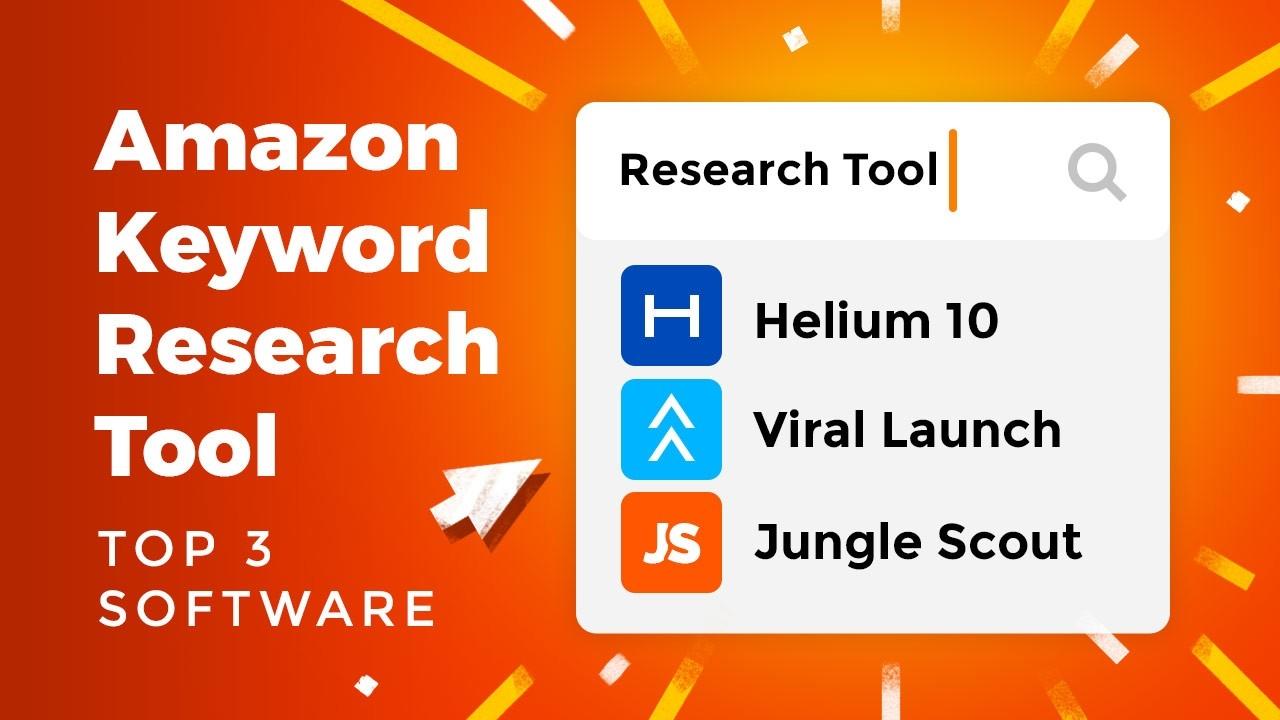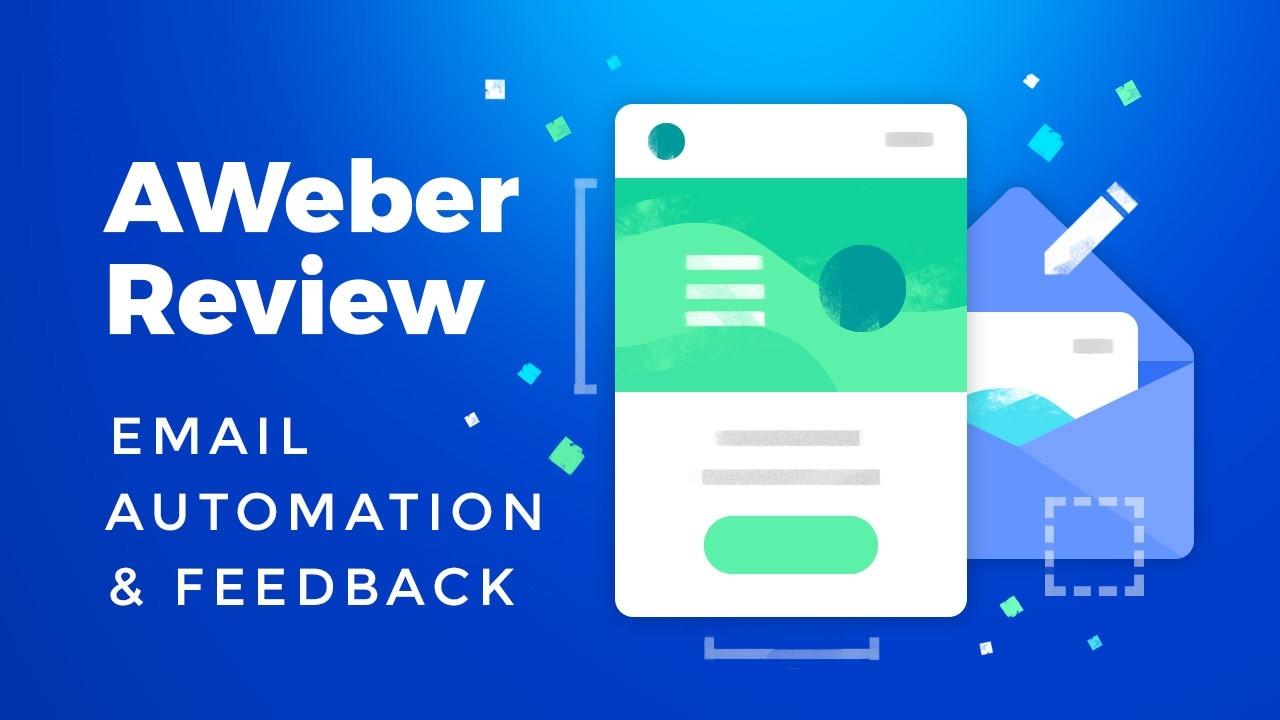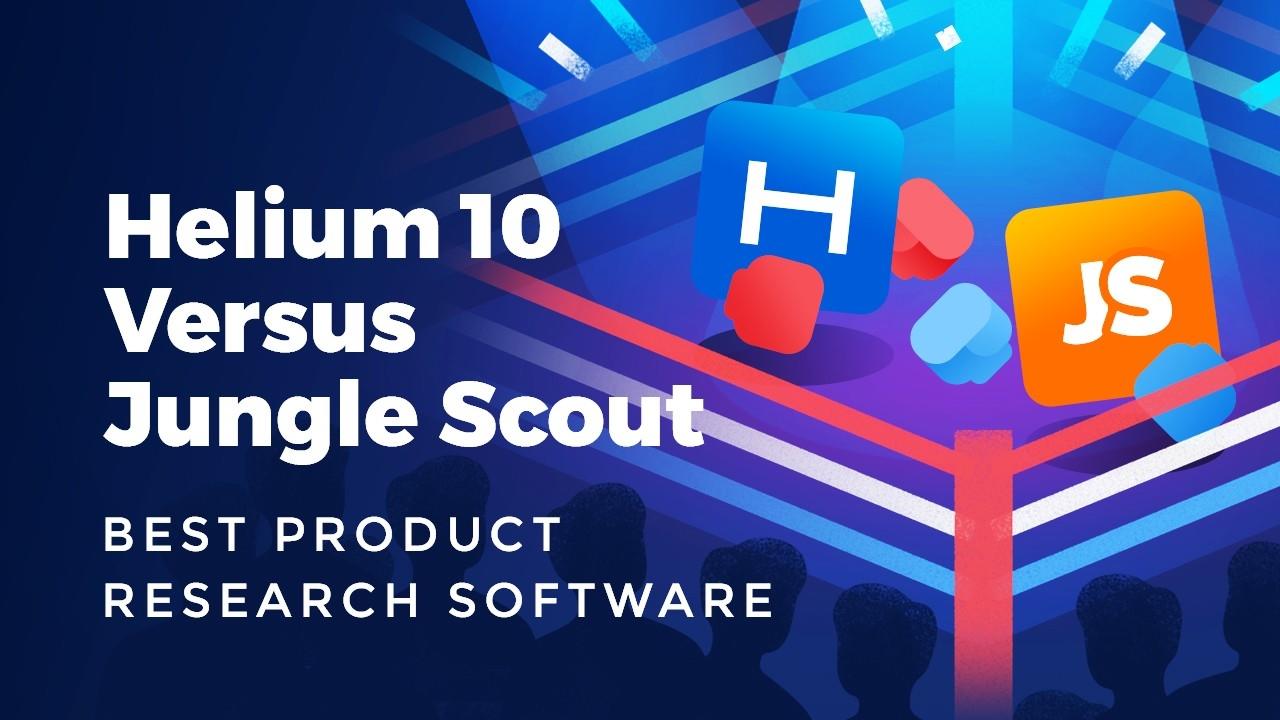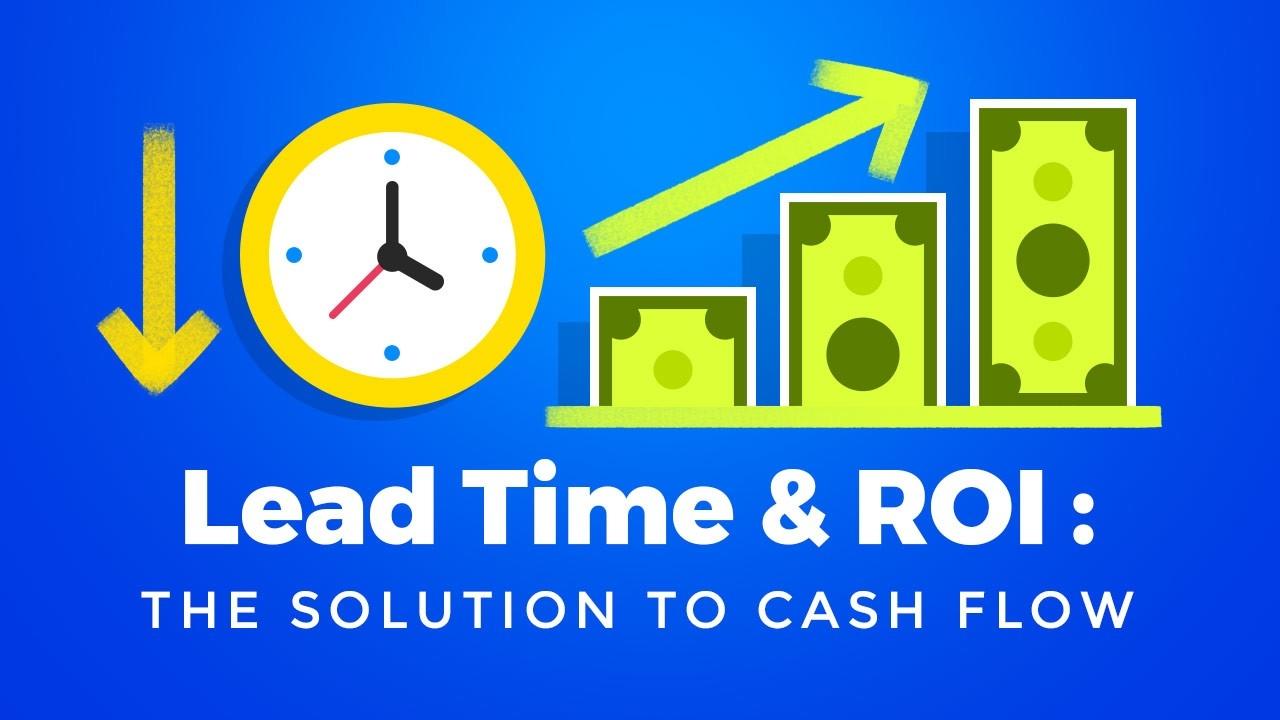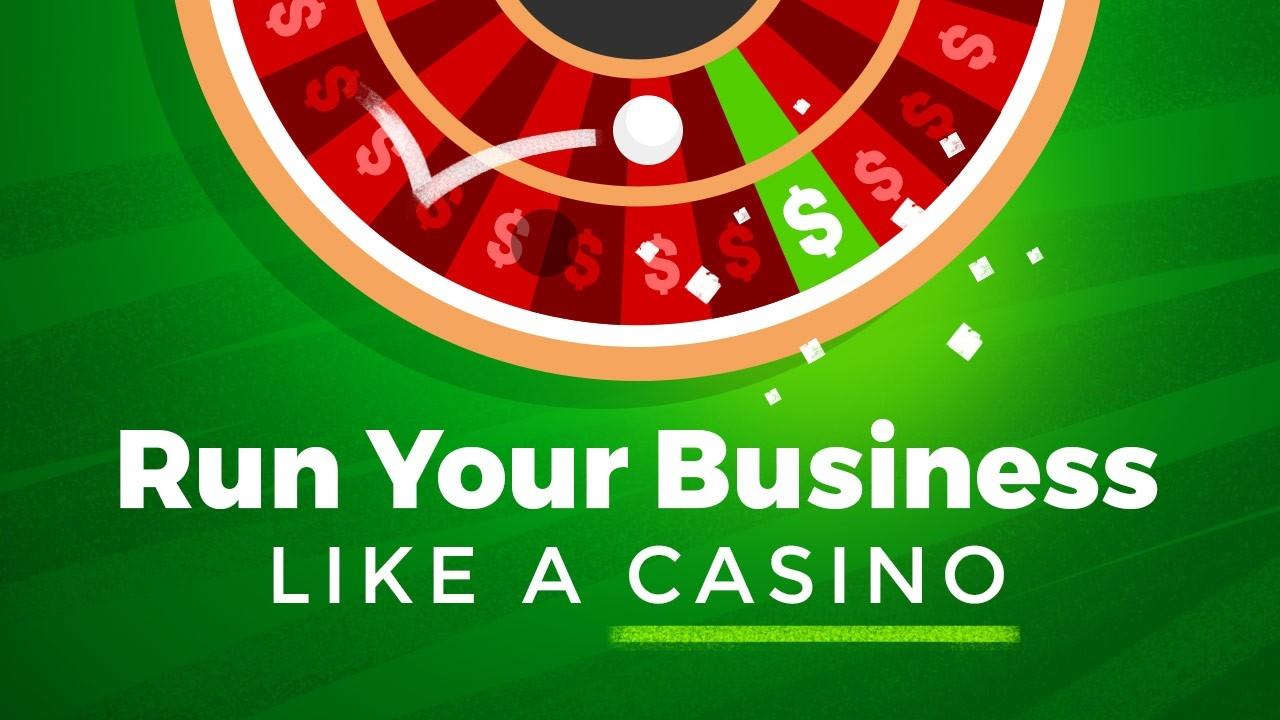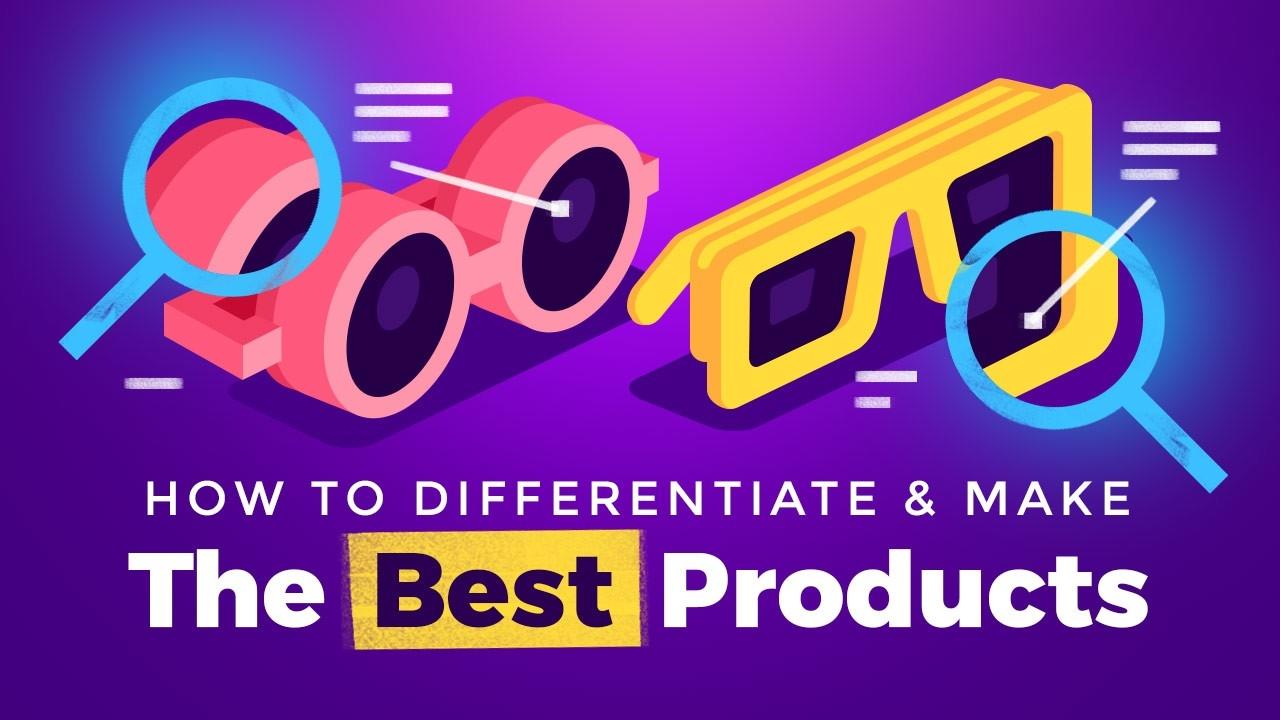Selling On Amazon: 5 Steps For A Successful Amazon Business
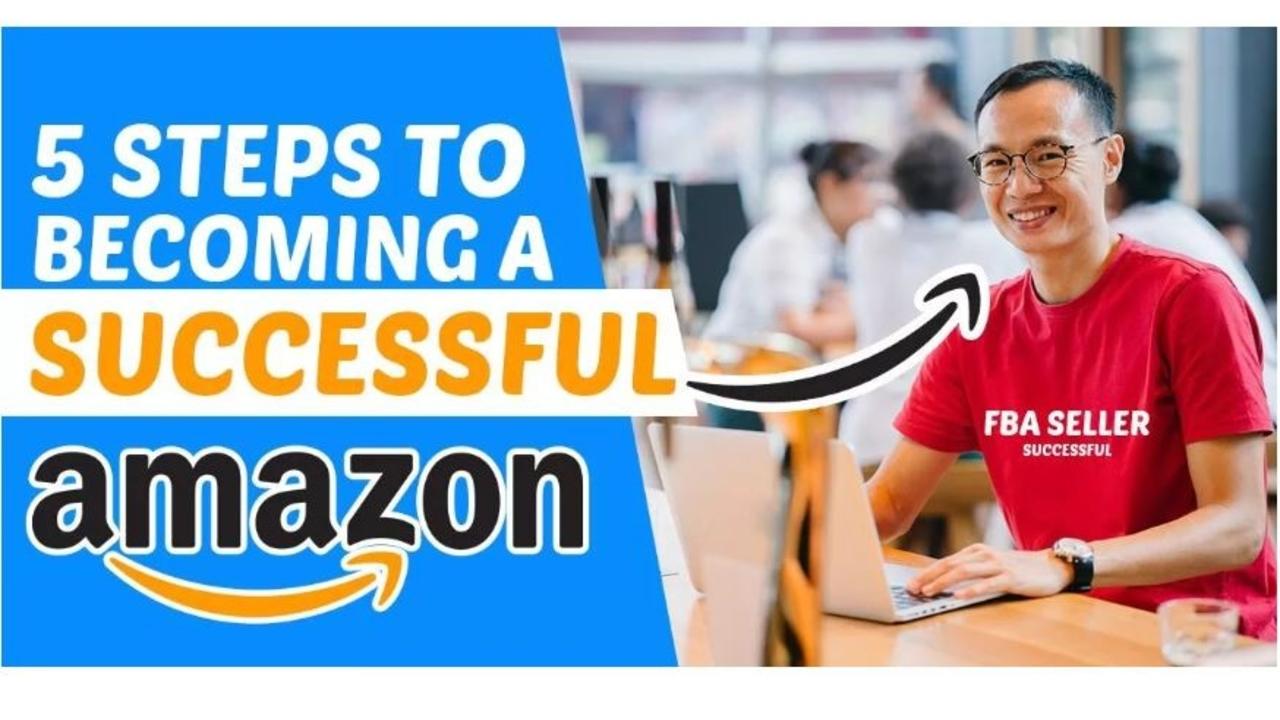
Selling on Amazon is one of the best ways to make money in 2019!
According to Marketplace Pulse, every 2 minutes a new seller joins one of Amazon's marketplaces. That's 3,473 new Amazon sellers every single day across Amazon's 14 marketplaces. These sellers range from people simply looking for a way to make additional streams of income, to entrepreneurs looking to make a full-time living.
If you are reading this, my guess is, you too are interested in selling on Amazon Amazon at some level. But what does it take to become a successful Amazon Seller? More importantly, how can YOU become a successful Amazon Seller in 2019 and beyond?
Amazon FBA is not a get-rich-quick scheme despite what online marketers would have you believe. It's a REAL business opportunity and should be treated as such. Becoming a successful Amazon seller takes a lot of hard work, dedication, and most importantly - the RIGHT INFORMATION. Nonetheless, Amazon FBA businesses are one of the most lucrative opportunities in the world today!
I went from $0 to $6 million in only 6 months, selling physical products on Amazon FBA!
Whether you are a complete beginner or have some level of experience, I wrote this guide to show you exactly what it takes to become a successful Amazon seller.
What is Amazon FBA & why should you sell there?
The Power and Reach of Amazon
Amazon is the world's largest online retailer and by far the most popular online store in the U.S. As an Amazon seller, not only can you start selling on Amazon in the U.S. market but you can leverage Amazon's global infrastructure to take advantage of 14 different marketplaces. Amazon's global ecosystem of marketplaces, fulfillment centers, and logistical advantages are simply unmatched.
The FBA business model makes it easier than ever to start and build a profitable business. Amazon essentially handles everything from customers, logistics, and back-end support. As a seller, your job is to simply find profitable product opportunities and ship them into Amazon's fulfillment centers. From there, Amazon will warehouse your product, fulfill orders, and provide customer service.
In the eyes of the Amazon customers, there is no difference between purchasing from 3rd-party sellers like you and me, or Amazon itself. Regardless of who the seller is, customers get the same delivery options, customer service, returns policy, and ultimately experience. Amazon prides itself on being a customer-centric company and it shows in their quality of service. As Amazon sellers, we get the benefit of Amazon's brand and reach without the overhead.
Amazon's Customer Base
Amazon also has the world's largest 'ready to buy' customer base. Just in the U.S. alone, over 195 million people visit the site every month. More importantly, nearly 100 million of those people make a purchase every single month. Even more exciting for sellers, Amazon currently has an over 100 million global Prime members, with 95+ million of them being right here in the U.S.
On average Prime members spend around $1,300 per year compared to non-Prime members who spend just $700. Amazon's army of customers are only growing in number. Around 55% of all searches now start on the Amazon search bar. But unlike Google, people don't go to Amazon's search bar to ask questions - they go there to BUY!
Becoming a successful Amazon seller is going to depend on your ability to 'reverse engineer' the demand from these customers and provide them with a solution to their problem. You do this by doing product research. All successful Amazon sellers know that correctly doing product research is where the bulk of your success comes from on Amazon.
This means in order to become a successful Amazon seller, you must learn to listen to and identify what customers - and by extension, the market is searching for. Not what YOU might think customers are looking for, but what the DATA actually confirms. Your job as a seller is to capture this demand from customers, through proper product and keyword research, then supply them with a quality product.
Amazon Success Mindset
As an Amazon seller, having the right mindset and attitude is going to be critical to your success. It is important for you to approach this Amazon FBA business opportunity knowing what you're getting yourself into. Although there are millions to be made and many lives that'll change as a result of selling on Amazon, it won't come easy - and will not happen overnight!
Success on Amazon is by no means a linear path, it comes with many twists and turns. Statistically speaking, 70% of sellers on Amazon never even purchase one product to sell. And of those who do, 90% stop selling after just one-year. This means only a few of you reading this will ever become active or even list a single product.
As you can see, becoming a successful Amazon seller is no walk in the park. But for every failure, there is also a success story. Last year, more than 140,000 third party sellers did over $100,00 each in sales. For every 1 of the over 500 million products being sold on Amazon, someone just like YOU is making money selling these products. So why not you?
I personally failed on my first 7 Amazon products, but my 8th product went on to do $6 million in sales in just 6-month. I am a walking testament to why you never give up! With the right mindset and information, you too can leverage Amazon FBA to achieve your financial goals and become a successful Amazon Seller.
How To Become A Successful Amazon Seller Step-by-Step
If your goal is to learn how to become a successful Amazon seller, you've come to the right place! I'm going to show you step-by-step how YOU can become a successful seller and start selling on Amazon FBA today.
Getting Started With Seller Central
The first step in the process of becoming an Amazon seller, if you don't already have one, is to create an Amazon seller account. Before I show you how to properly register and set up your account, you should have the following information prepared for registration:
- Your contact information - This includes your legal business name, address, phone number, etc.
- Email address - I recommend you created a designated email account for your business. You will frequently receive important emails from Amazon.
- Credit Card - You need a credit card with a valid billing address. If your card is not valid Amazon will cancel your registration. If you don't have a credit card, a debit card will also work.
- Phone number - You will need to have your phone close by during registration for verification purposes.
- Banking information - You will need to provide Amazon your bank's routing and account number to set up a direct deposit.
- Tax identity information - Amazon is by law required to collect and report your tax information. You will need to have either a business Federal Tax ID number or your social security number to register.
Register as a seller
Once you are ready to begin the registration process, click here to register either as an individual seller or a professional account.
- Individual seller accounts are typically best for sellers just beginning and who plan on selling fewer than 40 items a month. With this plan, you pay $0.99 per sale as a fee to Amazon, plus other selling fees but pay no monthly subscription fee.
- Professional accounts are best for sellers who plan on selling more than 40 items per month. Under this account plan, you would pay a monthly subscription fee of $39.99 and other selling fees.
The two selling plans differ in a few ways. If you are undecided on which plan fits you best, you can always start out as an individual seller and upgrade to a professional account or vice-versa. What Amazon refers to as "other selling fees" are largely determined by the size and weight of your products. It's important to keep this in mind when doing product research - the bigger and heavier a product, the more expensive in fees for the seller.
After you chose the selling plan, proceed through the process and create your Amazon account. The process is relatively straightforward and you will be required to:
- Provide your legal name and agree to seller terms
- Fill in your business information
- Set up your billing and deposit methods
- Provide Amazon your tax information
- Fill out the tax information interview
- Set up two-step verification for security
Once you verify your account, you are now ready to start selling and become an Amazon seller. For an in-depth step-by-step guide on how to register and get started on Seller Central check out How to Sell On Amazon.
Finding What To Sell With Product Research
Picking what to sell on Amazon is the absolute most important part of your Amazon FBA career. Although there are no specific set of criteria that will guarantee your success with every product if you use the right tools and strategies you can make money and compete in any market on Amazon.
Amazon FBA Business Models
Different markets on Amazon will require a different level of skill and capital in order to succeed. So finding profitable products and successfully selling them is going to depend on you being able to find the right market and product for your level of resources and skill.
This also applies to the different Amazon Business models. Anyone can sell in a market on Amazon but not everyone can profitably compete.
- Retail Arbitrage - Arbitrage is a business model where sellers purchase products from retail or online stores at a discounted price, then resell it on Amazon FBA at full price. Although this business model is hard to scale, it's often the easiest way to start selling on Amazon.
- Private Label - Private labeling is a business model and process of putting your own brand or label onto a product and selling it. There are thousands of items on Amazon that are just rebranded of readily available white-label products using this exact method.
- Wholesale - wholesale requires you buy brand name products from manufacturers at wholesale prices and sell them on Amazon. Unlike private labeling, with wholesale, you're buying products from established brands such as Adidas or Nike not Chinese suppliers on Alibaba.
FBA business models such as retail arbitrage, are easier and require relatively less initial capital to start. Private labeling, while it requires more work and capital, is extremely more profitable.
Our focus in this guide is on private labeling. In my opinion, selling physical products on Amazon is the most lucrative opportunity in the world right now! Where else can you get a 340X ROI on your money in just 6 months?
What Makes For a Successful Private Label Product?
By 2022, amazon's private label business is expected to reach $25 billion in annual revenue. You are only one successful product launch away from claiming your share of this future. Private labeling is the most popular and lucrative way to leverage Amazon FBA in my experience.
Nonetheless, there is no specific formula or step by step guide on finding the perfect product to sell on Amazon. In fact, as sellers, we don't directly determine what products sell on Amazon, Amazon's over 300 million customers do. If you want to succeed as an Amazon seller, your role is then to analyze this demand and follow it up by supplying the customers with a solution, in the form of a quality product.
Although there are not a specific criterion that will guarantee your success while doing product research, it's very important to keep in mind the following factors as a sort of best practice.
Differentiation
This is one of the most important criteria for determining if you will fail or succeed when sourcing private label products on Amazon. Why should a customer buy your product over the competition? How are you adding more VALUE to their lives?
Being able to differentiate and adding value to the customer, relative to your competitors is essential to success in any market on Amazon.
Here are some ways you can add value and differentiate your products:
- Make a better assortment of goods
- Provide different colors and features
- Provide a more effective solution
- Better marketing to the customer
Premium Quality Products
When private labeling any product, I strongly suggest you have a premium product and brand. A big part of success on Amazon is built on having the BEST PRODUCT.
Here is why:
- Perceived Value - People often associate higher quality with higher-priced items. This means if you bring to market a premium product, you are able to charge a lot higher. Keep in mind, there is always a market for the rich.
- Higher margins - Having quality premium products also leads to higher margins and ROI. Because you are able to charge a higher price point, you can retain a higher % of profits.
- Good Reviews - Getting 4 and 5-star reviews on Amazon is very difficult. Having the best product will subsequently lead to more quality reviews than your competition. This, in turn, leads to more sales and profit for you.
- Customers - As I've previously mentioned, Amazon is the most customer-centric company in the world. Everything they do is with the goal of keeping their customers happy. Bringing quality products to the market will make your customers happy and Amazon in return will reward for it.
How To Find Products To Sell on Amazon FBA
The next step in becoming a successful Amazon seller is to find the products you will be selling on Amazon or commonly known as the product research phase. All of the successful Amazon sellers know, that product research is one of the most important factors in determining if you will become a successful Amazon seller.
Simply put, correctly dong product research will make or break your career as an Amazon seller.
There are two overarching steps in product research; idea gathering and market validation.
Idea Gathering
Gathering ideas is the first step in the product research process. This is where you gather potential ideas using different methods.
For example, you can use the BSR (best seller rank) to get ideas of what products are selling well relative to others. The BSR ranks all products in each category by sales rank, the best selling product being number 1. You can also often gather ideas for products just from your daily life. What products are you using? Seeing?
The easiest and most recommended way to gather product ideas is to use tools with Amazon's data. There are tools like Viral Launch and Helium 10 which gives you data on Amazon sales for each product. You can search their database for potential products based on the set of criteria that fit your circumstances.
Market Validation
Market validation is the next step in the process. Once you find potential product ideas, you then dissect the market through analysis. It's very important to validate the market demand for a given product before launching it.
This is specifically the reason for my earlier product failures on Amazon. I was blindingly launching products before validating if there is actually demand for this product in the marketplace.
Market Research
Although everyone can compete in the market, you can't compete in every market. For example, to be successful in a large market will require a lot of capital. If you are just beginning on Amazon, a good strategy would be to start in a small low-competition market then scale your way up. Ultimately it's up to you to find a market and product you can succeed in given your level of skills and resources.
Understanding Common Barriers to Entry
Another important factor to consider when deciding which market and product to sell on Amazon FBA is barriers to entry.
- Capital - Do you have enough money and or resources to compete in a given market?
- Size & Logistics - Some products are too big to ship affordably through Amazon FBA. Amazon fees are based on the weight and dimensions of the packaged item. Here is a list of product size tiers as defined by Amazon.
- Seasonality - Not all seasons are equal on Amazon with the 4th quarter being the busiest season of the year. Do you have the experience and ability to correctly forecast inventory and demand for a given season?
Keyword Research
Identifying the right keywords is fundamental to figuring out what to sell on Amazon FBA. On Amazon, your goal and mindset should be to capture the demand on the platform, not try and generate it. Therefore, finding the right keywords, with the highest search volume, is critical to your success.
Keyword Search Volume
Keyword search volume is one of the biggest mistakes I see sellers make when selling on Amazon. You can have the best product in the market but if nobody is searching for it, you will not make sales. The importance of finding the keywords with the highest search volume cannot be understated.
Tools like Helium 10 and Viral Launch are enormously helpful in choosing the right keywords. They provide you with exact data directly from Amazon, taking the guesswork out of keyword research.
Picking what to sell on Amazon FBA is a crucial first step in the process of becoming an Amazon seller. Next, you need to take into account the different factors that make for a successful Amazon product. In order to find profitable products, you must listen to what research is telling you about a given market and think logically.
To be successful as an Amazon seller, you have to learn to capture the demand already on the platform through doing product and market analysis. You do this by first gathering potential product ideas, then you must validate these ideas through market analysis. Tools such as Viral Launch and Helium 10 can immensely help you in this process.
How to Source Products For Amazon FBA
The next step in becoming a successful Amazon seller is learning how to source your products. Once you've found the product you are going to sell, you have to get it manufactured and delivered to the Amazon warehouse.
The majority of sellers automatically think of China when it comes to sourcing products for Amazon, but Alibaba is not your only option. I'll also show you how to source products from right here in the U.S.
Although our focus in this guide is primarily on private labeling, here are some other sourcing options for the different business models.
- Retail Arbitrage - As mentioned before retail arbitrage is buying discounted products from retail stores and reselling on Amazon FBA for a profit. To source products under this business model, you can search for places like Walmart, Target, or liquidation and surplus stores. It doesn't matter much where you source from, your end goal is to buy products as low as possible and sell high.
- Wholesale - Under this business model, you buy brand name products directly from the manufacturer in bulk - at a discount, and resell them on Amazon FBA. Sourcing wholesale is the most scalable FBA inventory sourcing method. However, it's important to always go through the proper approval and or certification process to resell a given product. If you fail to get authorization, Amazon can flag you for copyright infringement and suspend your account.
Sourcing Private Label Products
The idea behind sourcing private label products is pretty simple. Find a product you would like to sell, add your own labels and specifications, and source it directly from the manufacturer to sell them under your brand on Amazon FBA. This, however, is easier said than done!
Finding the right private label manufacturer, getting the best price, and sourcing high-quality products can be logistically challenging in practice, but the payoff is well worth the work!
If you are just a beginner and are a little reluctant about sourcing from China, sourcing domestically from the U.S. is also another viable option. However, keep in mind that 95% of the time, you'll probably be sourcing from Alibaba, especially for beginners.
How to Find Amazon Suppliers in the USA
One method for finding suppliers in the U.S. is to use search directories. However, this method is not always the most effective because not all suppliers are listed and use these directories.
Here is a list of directories you can use to find suppliers in the United States:
Sourcing Amazon Products from Alibaba
Alibaba is an online marketplace that is similar to how Amazon works. While Amazon brings customers and products together on their platform, Alibaba connects suppliers and manufacturers to businesses.
For Amazon sellers, especially beginners, the majority of your products will come from Alibaba and by extension China.
The major reason sourcing products from Alibaba is so attractive to Amazon sellers, is because of the price point of products. Manufacturing cost are low in China and this means you can increase your profit margins and grow your business faster by sourcing from there.
However, sourcing from Alibaba also comes with advantages and disadvantages of its own.
Advantages
- Quantity of suppliers - On Alibaba you can find hundreds of suppliers to choose from for your products.
- MOQs - Unlike companies in the U.S. you can negotiate and order smaller quantities of products. This allows you to order and test small quantities before heavily investing in a product.
Disadvantages
- Communication - One major disadvantage of sourcing from Alibaba is the cultural and language barrier. This barrier between you and the suppliers can lead to slower and difficult communication.
- Shipping time - The shipping time from China to Amazon can be long and/or expensive. Ordering products by sea freight can take around 4 weeks but is the cheapest option. Airfreight can get your products to you in about 5 days but is more expensive than sea freight.
- Quality - Because labor and manufacturing costs are lower in places like China, consumers often associate products from there with being of lower quality.
Before you move on to finding suppliers on Alibaba, it is very important you understand the difference between manufacturers, distributors and trading companies.
Your sourcing experience is going to differ based on whether you're buying from the manufacturer, or the trading companies and distributors- who are essentially just middlemen.
Manufacturers
Manufacturers are the ones actually making the products in their factories. They have the material, equipment, and staff to make your products exactly to your specifications. Working directly with the manufacturer is the best way to source products in most cases. This way you cut out all the middlemen and retain a higher profit margin.
Trading Companies
Trading companies don't manufacture any of the products themselves, they source them from factories and resell them. They are just middlemen similar to drop shippers. A lot of the suppliers on Alibaba are actually trading companies, not direct manufacturers.
Although working with manufacturers directly is the best way to ensure you cut out the middle me, it does have one disadvantage relative to trading companies. Manufacturers in China don't often employ the resources to hire English speaking salespeople.
This barrier can potentially create confusion and problems between you and the manufacturer. Trading companies, on the other hand, are in the business of reselling products they source from factories. This means they are more likely to employ English speaking representatives.
How to Find Suppliers on Alibaba
- Create an Account on Alibaba - The first step to finding a supplier for your product is to open an Alibaba Account.
- Research - The next step in the process requires you to do your due diligence on multiple fronts. It's up to you to diligently research the suppliers and their capacity, the price point of the products, and most importantly the quality of the products. Alibaba is notorious for scams and it's your responsibility to take every precaution before ordering anything.
- Contact Suppliers - Once your done researching, it's time to contact potential suppliers. You should have a list of around 5 suppliers to get price quotes from.
- Order Samples - You need to order a sample of your product before moving any further. Always order samples before investing in a product! Ordering samples from your potential suppliers will help you narrow down the best option amongst them.
- Place Your Order - Once you've examined the samples and negotiate the price with your supplier, it is time to place your order. How you make your payments will depend on the terms agreed on by you and your supplier. Generally speaking, you would pay 30% of the total cost upfront and the final 70% after production and inspection of the products.
- Shipping & Logistics - The final step is to get your products shipped from your supplier, to your house or to the Amazon FBA warehouse. This process can be intimidating because of the rules and regulations that come with importing products into the U.S. Freight forwarding companies like Flexport can help ease this process by taking care of all the taxes and paperwork involved in the process.
Factors to Consider When Selecting a Supplier on Alibaba
- Price: Which supplier is giving you the best price without compromising the quality of the product?
- MOQs: Which supplier allowed you to negotiate the MOQ that is perfect for your budget and comfort level.
- Payment Terms: Is there a supplier whose payment terms work best for your situation? Will they accept your payment installments or will they allow you to pay half upfront and the other half after you receive the finished product?
- Communication: Which supplier responds to your emails the fastest? Notifies you of clarification questions? Skypes with you? You want to choose a supplier who is available when you need them and is interested in keeping your business.
Read more: Add video to your Amazon listing and increase your sales
Launching Your Product on Amazon FBA
If you are to become a successful Amazon seller, the importance of learning how to properly list and optimize your product listings can not be understated. Once you source a product from your manufacturer and ship it into Amazon, it is time to create your product listing. This is where customers will see your product, learn about it, and hopefully buy.
Amazon product listing components
Title
The title of your listing is what Amazon shoppers will see as they browse. The titles should include your brand name and as much relevant information as possible. This could be details like dimensions or quantity counts. The title of your products are also the most important place to include keywords as well.
Product Features
The bullets on your listing are where you highlight the important aspects and benefits of your product. Make sure your bullet points are rich in keywords and very informative for buyers.
Your end-goal should be to create bullet points that persuade customers to purchase your product over the competition. This is also where you should incorporate any important keywords you couldn't fit in the title.
Backend Keyword
The backend keywords don't appear on your live listing but are just as important as other components. This is where you input any related keywords you were not able to fit in the main parts of your listings.
For each listing on Amazon, you can have up to 9 product photos. The first image referred to as the 'main' or 'hero' image is the most important one. This is the first image shoppers see when browsing among different sellers on Amazon.
Photography
This means that your images should be high-quality and professional. Also, make sure to include a lifestyle image showing the product in use because shopping on Amazon is a visual process.
Product Descriptions
This is where you can write a longer description of your product and expand on your bullet points. While bullet points and the title should focus on keyword placement and specificity, the product description section should be utilized to write in length about your product. You should write your descriptions effectively and accurately without grammar issues and misspellings.
Creating an effective product listing can make the difference between failure and success as an Amazon seller. As a seller on Amazon, your product listing is essentially your storefront. It's your job to entice and attract buyers through your listing title and 'hero' image.
Once they click on your product, buyers then get a full impression of your products by reading your descriptions, reviews, and looking at your images. Your listing should balance optimization for Amazon's ranking algorithm and still be enticing and captivating to buyers who are searching for your given product.
Keyword Research
Keywords are another crucial factor in determining if you will succeed as an Amazon seller. You can have the best product and create an amazing listing, but if you don't use the right keywords, the ones that customers are actually using in their search, then your products won't sell because no one will find them. Amazon's search engine uses keywords to identify relevant products for their customers.
If you do keyword research properly and identify the top keywords, that your potential customers are using, you can then take those keywords and included them in your product listing.
This way your product listing is ranked higher on amazon for the keywords that matter to you. Your goal is to have Amazon's search engine to tie your product to the highest searched keywords for that given product.
Keyword Search Volume
Keyword search volume is one of the biggest mistakes I see Amazon sellers make. You can have the best product in the market but if you don't use the relevant keywords, with the highest search volume, you will not rank and consequently make sales.
Tools like Helium 10 and Viral Launch are enormously helpful in choosing the critical right keywords. These tools provide you with the exact search volume directly from Amazon, taking all the guesswork out of keyword research.
How to Scale and Grow Your FBA Business
The final step in becoming a successful Amazon seller is to learn how you can scale and grow your FBA business.
Once you have successfully launched your product and started selling on Amazon, it is time to level up! Amazon is still a growing platform and you have the opportunities to grow and scale along with it. Let's take a look at some tips and tricks to help you grow your FBA business.
Marketing
The first and best way to grow your sales and FBA business is through marketing on Amazon. Amazon marketing is often referred to as Amazon Sponsored Ads or PPC (Pay Per Click.) As a beginner, you have zero reviews and zero sales. This means your products are not ranking on the Amazon search algorithm and customers don't have a reason to trust your product.
Using PPC ads is a good way to get sales and views in a short span of time. There are only two ways to appear at the top of the rankings when a customer searches for your product. The first is the organic search result and the second being paid search results.
- Organic search result - is when you get selected by Amazon's algorithm as the most relevant result for the searched keyword. Amazon takes into account factors such as price, availability, and sales history to help determine where your products will appear relative to your competition.
- Paid search results - are essentially paying to play. Amazon ads are a way for sellers to buy their ranking at the top of Amazon's search result. You would pay each time a customer clicks on your ad in an auction format. The seller with the highest bid will appear in the first position in the search results, followed by the 2nd highest bidder and so on.
Amazon's Key Marketing Metrics
- Advertising Cost of Sales - (ACoS) is the percentage of attributed sales that you spend on advertising. This metric is calculated by dividing the total ad spend by the attributed total sales. Sor example if you spend $8 on ads and it results in attributed sales of $40, your ACoS would be 20%.
- Impressions - is the number of times your ads were displayed to customers.
- Clicks - are the number of times your ads were clicked by customers.
- Click-Through Rate - (CTR) is the percentage of customers who click your ads after seeing it. The CTR is calculated by dividing the number of total clicks by the number of impressions. The higher your CTR, generally the more effective your ad is.
- Cost Per Click - (CPC) is simply the average cost you are paying for a single click. Your goal should be to push your CPC rate as low as possible so you can maximize the ROI of your ads.
Creating Campaigns
Creating ad campaigns on Amazon are relatively straightforward and not to complicated. The Amazon sponsored ads program has a simplistic platform that makes it easy for even beginners to understand. Your goal with these PPC campaigns is to find profitable keywords that convert to sales. After you get some data, you should remover non-converting keywords and increase the bids for keywords that are converting well for you.
You have two options when choosing Amazon PPC campaigns, automatic campaigns or manual campaigns.
Automatic Campaigns
Automatic campaigns allow the seller to select their budget and let Amazon work for you to automatically find keywords. Amazon will look for keywords that best match your product's category, related products, and keywords in your listing descriptions. Using automatic campaigns can be useful for beginners because of the easy setup. However, letting Amazon automatically choose your keywords means you have less control relative to manual campaigns.
Manual Campaigns
Manual campaigns allow the seller to handpick keywords to bid themselves. This strategy allows you to upload a list of keywords that you find from your own research. Manual campaigns also allow you to define your keywords by different match types. This means you can control how broad or narrow the Amazon shoppers' actual search term can be in order to trigger your sponsored ad.
The key to successful marketing on Amazon is to measure your results, then fine-tuning and improving your campaigns for more profitability. If you just run ads without measuring and making logical decisions, you'll end up spending more on your ad budget than necessary. This means less profit margin for you and a slower growth rate.
Optimize Your Listing
Another option for growth is to optimize your Amazon product listings. Investing more time in optimizing your listings can have a big impact on your sales. After all, the goal of Amazon is to rank as high as possible. The higher your ranking the more sales and consequently more profit in your pockets. Before expanding into new products and markets, you should work on improving your Amazon SEO so you can maximize the potential of your product.
Check out Amazon's list of recommendations for an optimized listing.
Title - Your product title is one of the most important pieces of your listing.
- Capitalize the first letter in every word
- Include all relevant product details
- Incorporate as many top keywords as possible
Bullet Points - The product features section should highlight the most important features of the product.
- Use keywords in each bullet point
- Put important features at the top of the list
- Focus on the features and benefit of the product
Description - This is where you expand on your product features, benefits, and key characteristics.
- Is your description fully utilized?
- Does it provide solutions to the customer's major pain points?
- Is it optimized for keywords?
Photos - Product photos have the ability to make or break your product on Amazon. The importance of using professional high-quality images can not be understated.
- Your hero image must be on a white background
- Have the product only, no additional objects
- Photo quality should be at least 1000x1000 pixels
- Show the product in use with a lifestyle photo
Whether you are an Amazon seller just beginning or have some experience under your belt, optimizing your product listing will no doubt lead to a boost in your sales and ranking.
Expand to More Amazon Markets
Once you get the hang of things and are ranking well on Amazon, another option to grow and scale your FBA business is to expand into more Amazon Marketplaces. While the U.S. is the leader in Amazon's net sales, there many other profitable markets around the globe.

Source: Statista
As you can see in the chart above, markets like Germany, UK, and Japan are great options for expanding into. Amazon because of their huge infrastructure and reach make it a lot easier than you might think to expand to new markets. With just a U.S. and UK seller central account you can easily sell in other countries with just a few clicks.
For example, with an Amazon UK seller account, you can cross-list your items on Amazon Germany. When a customer orders your product in Germany, it will be shipped from the UK FBA warehouse. This means you can use your existing SKUs to sell in a new marketplace. Amazon even provides you translation services so your listings will be correctly created for the given country and language.
As the Amazon market in the U.S. gets more saturated, the top Amazon sellers are looking to expand into new countries and there is no reason why you can't either. However, although expansion into new markets can offer a vast new opportunity for sellers, keep in mind this opportunity also comes with risk. It is up to you to carefully do your research and make a business decision.
Conclusion: How to become a successful Amazon seller in 2020
- Create your Seller Central account and set up your profile
- Find products to sell through product research
- Source your products and get them to Amazon FBA warehouses
- Create your product listings and launch your products
- Optimize, grow, and scale your FBA business
I know first hand, how powerful this Amazon FBA business opportunity can be. At just 25 years of age, I was able to do over $6 million in sales.
As you can imagine this completely changed the trajectory of my life!
Whether you are interested in starting an FBA business as a side hustle or chasing your financial dreams, with the right INFORMATION and by taking ACTION! you too can leverage this opportunity and become a successful Amazon seller.
I want you to realize your dreams through this FBA opportunity, just like I did! I put everything that's helped me succeed on Amazon into The Last Amazon Course to help so I can share the INFORMATION you need to create a successful Amazon business for years to come.

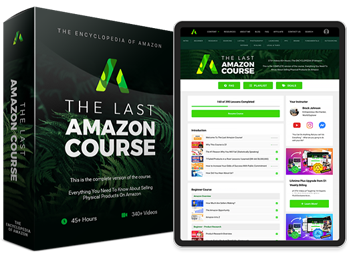
Over 375+ videos (45+ hours)
Interviews with other million dollar sellers and CEO's, and much more
